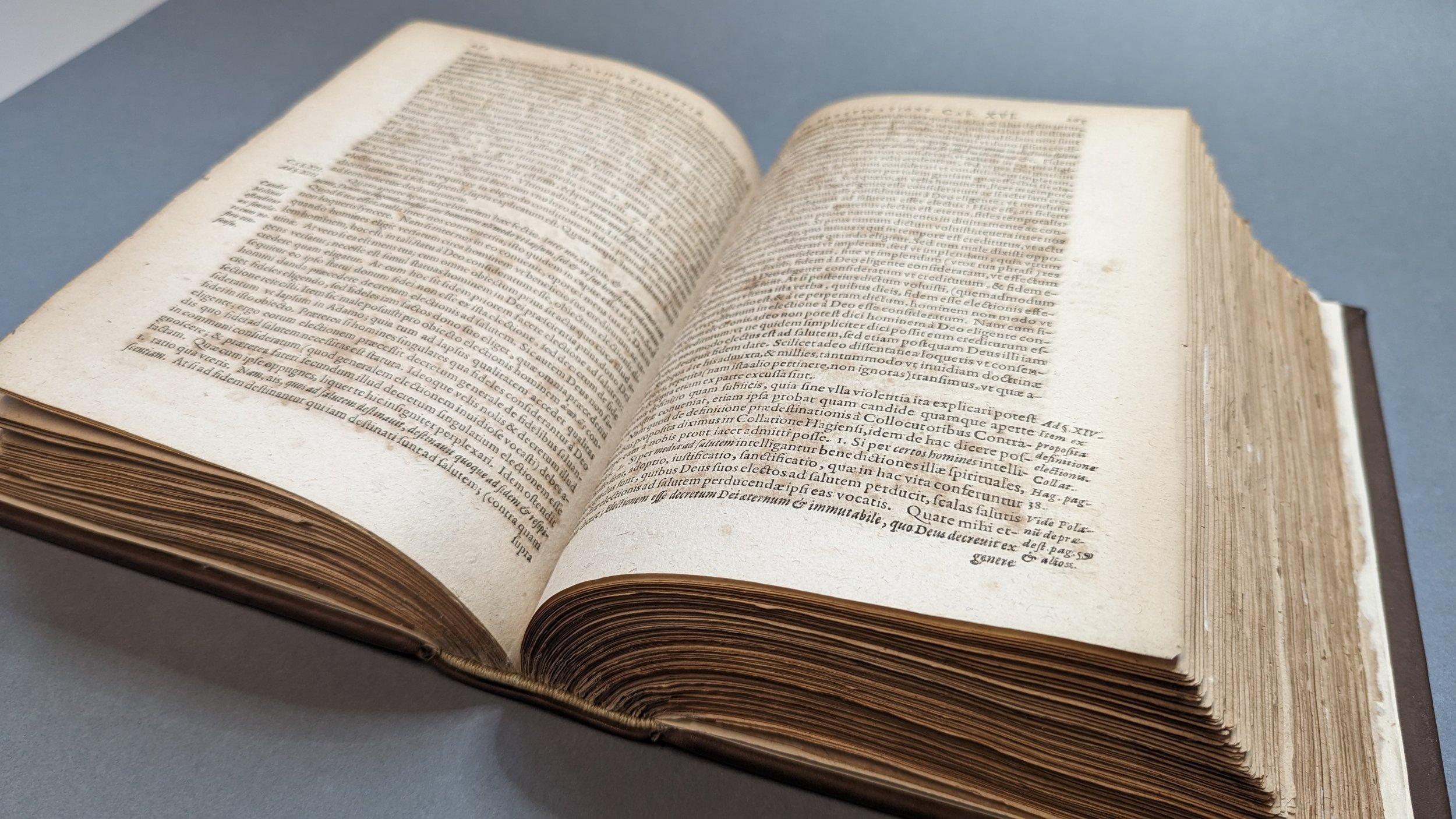1622 Laminated Book from Sion College Collection at Lambeth Palace Library
.This work was carried out at Lambeth Palace Library Conservation Studio as part of my final project at City & Guilds of London Art School. Sion College Collection A69.5/C81M, Lambeth Palace Library.
Conservation of
Lambeth Palace Library
A69.5/C81M
Sion College Collection
Conservation treatment of a 1622 laminated book with missing binding from the Sion College collection at Lambeth Palace Library. The book originally belonged to Archbishop Thomas Tenison (1636-1715) and was previously conserved in 1974. The textblock was severely embrittled from bomb damage during the second world war, and a few of the pages were laminated using cellulose acetate.
Treatment included cleaning, delamination using a solvent chamber, deacidification, guarding & paper infills to the centrefolds, and finally rebinding in archival calfskin in a 17th century Cambridge style in keeping with the aesthetic of the historic collection from whence it came.
The original sewing pattern was discovered during treatment and was replicated for the final binding.
Provenance
A first-edition 1622 publication in Latin of a theological work on Arminianism by Dutch Remonstrant Johannes Arnoldi Corvinus (also known as Johannes Arnoldsz Ravens). The work was printed in Frankfurt am Main, Germany by printer & publisher Erasmus Kempfer. The book now forms part of Sion College’s collection, which was transferred to Lambeth Palace Library upon its closure in 1996. A manuscript inscription on the verso of title page reads "Tenison Library 1861." Tenison’s library at St Martin in the Fields sold a vast amount of their books and manuscripts at Sotheby’s auction in 1861.
An early catalogue from 1698 of Tenison’s Library from its founding exists at Lambeth Palace Library (MS 1708), and J. A. Corvinus’ book is listed amongst the collection.
Brief Description
Printed on handmade laid paper
Exposed textblock
2 sewing schemes:
oversewing of individual leaves onto a loose centre-guard measuring approximately 20mm wide and the same height of the textblock, creating a ‘made section’
The ‘made sections’ were then sewn all along, using coarse thread, passing across wide line tape supports.
The entire spine was glued using a synthetic material
The title page as well as the first and last page have been laminated using an unknown laminate tissue.
Brief Condition
Missing boards & covering
Sewing still secure, although tension was too strong for the condition of the paper
Aged adhesives have yellowed and hardened over time, hindering the movement of the spine
Extremely brittle paper, which caused breakage with opening
Some pages were laminated using cellulose acetate
Treatment Outline
Cleaning & Disbinding
The adhesive was softened using a poultice.
Because of added plasticisers, the softened adhesive became rubbery, which required careful cutting of the sewing thread to disbind the textblock.
Sizing
The paper was sized using a 0.5% methyl cellulose in 70% ethanol solution to impart strength. Paper released from lamination was sized using 0.5% gelatin to help stabilise the iron gall ink manuscript.
Delaminating
Using a purpose-built solvent chamber, the laminated pages were immersed in a shallow bath of acetone to break the bonds between the paper fibres and the cellulose acetate film.
Guarding & Infilling
Single leaf folios were rejoined using 7gsm Japanese tengu. Areas of loss were infilled using a mix of dyed Japanese and Korean tissues of various weights. The Japanese tissues were primarily kozo fibres and the Korean tissues were primarily cham dak fibres.
Deacidifying
The extremely brittle paper were washed to remove acidic degradation products as well as discolouration. The washing process helped to improve the textblock’s overall pH level from pH 4 to pH 7.
Rebinding
The textblock were re-sewn using linen thread. The sewing supports and endband cores were also made by plying linen threads. The paste boards were made by laminating unbuffered cotton paper and boards. The book was bound in full leather using archival calfskin in a 17th century Cambridge style.
Before & After Photos












